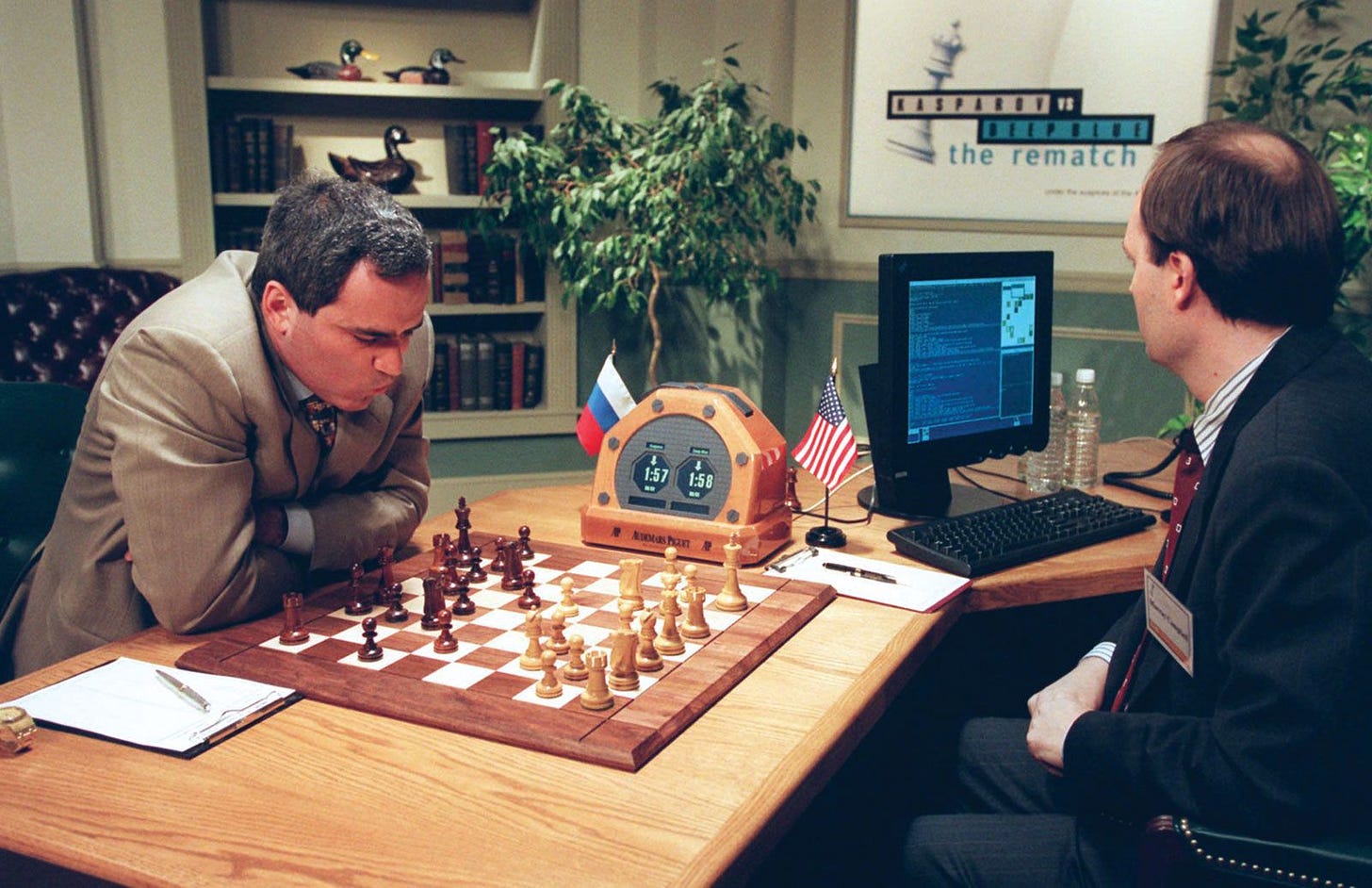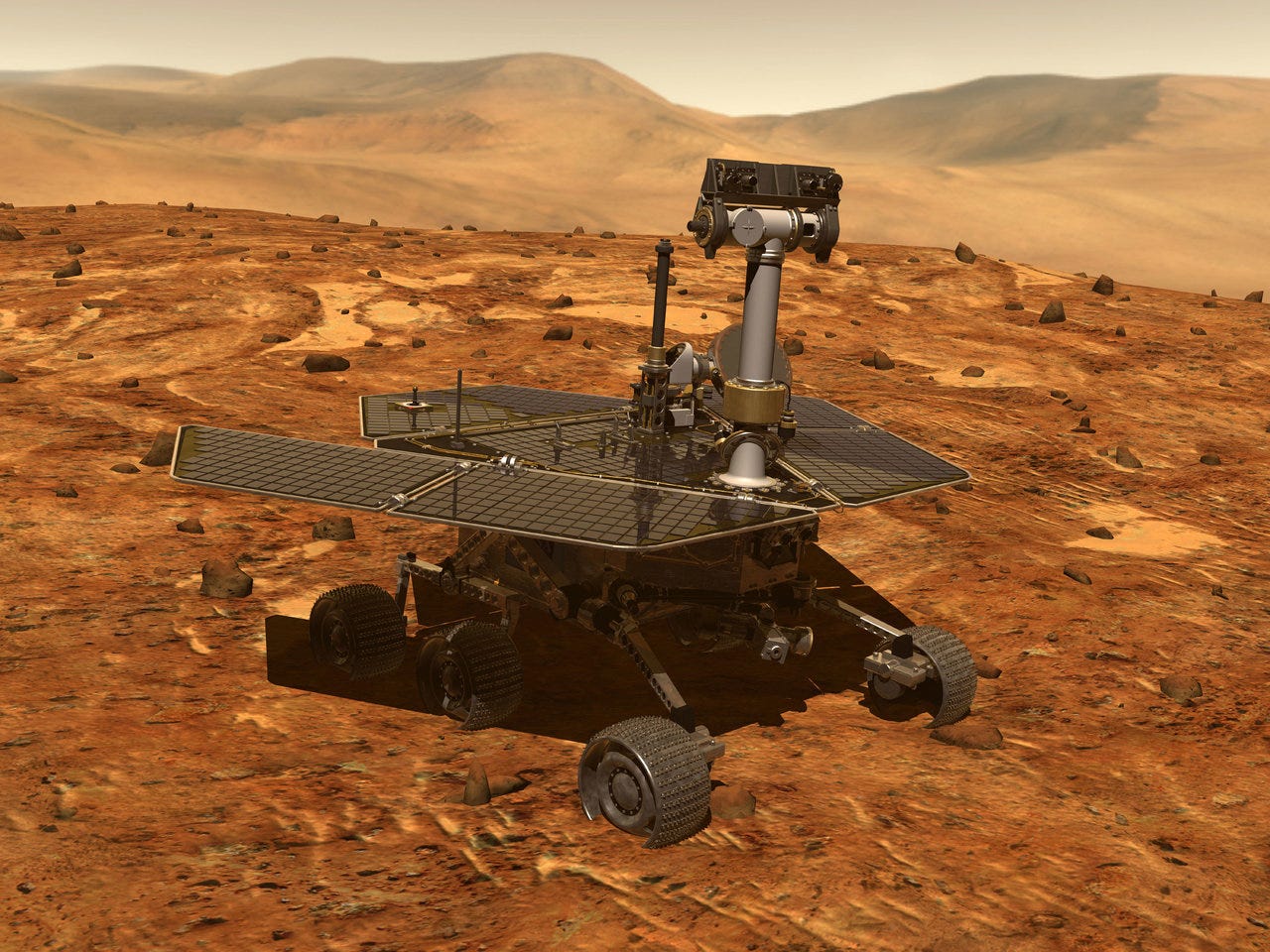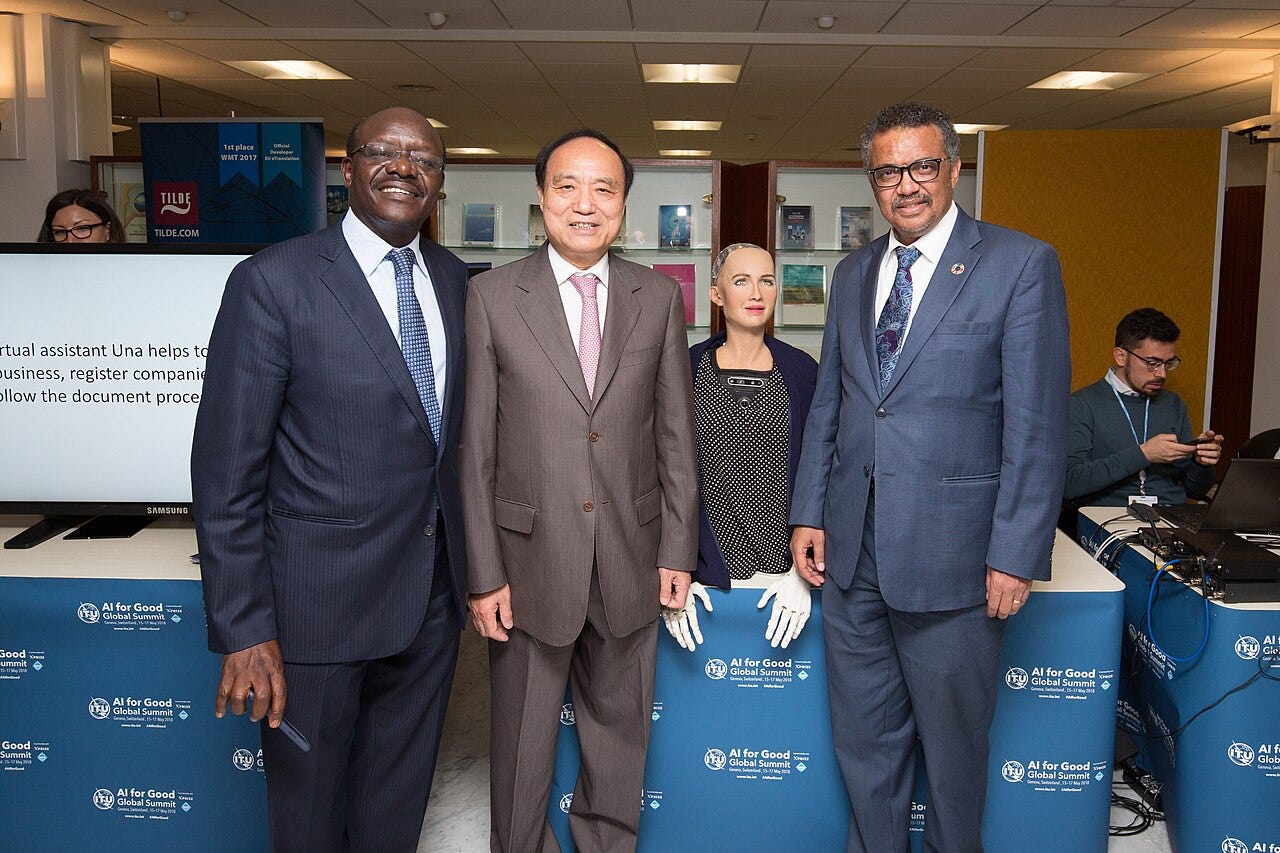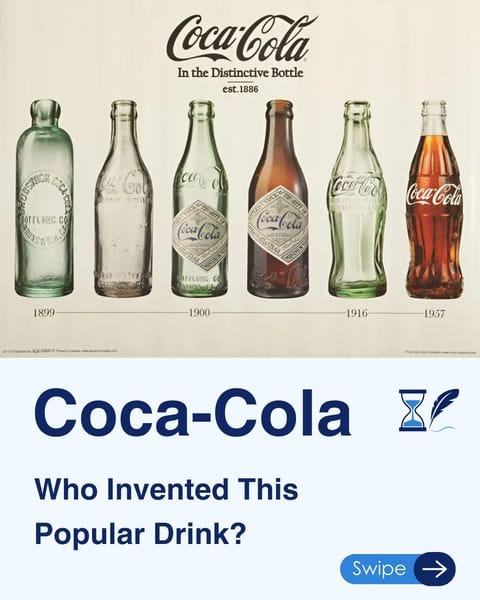⌛🪶AI: Tracing Its Growth
A Journey Through Its History
Quick HWH: Check out the history of the Olympics, in 5 minutes.
The Dream Begins
The idea of machines that can think like humans goes back a long, long time. The Greeks had a word for such machines: "automaton," which means "acting of one's own will." Homer, the ancient poet, described automatic doors that could open by themselves in his epic poems. People have always been fascinated by the idea of creating machines that can act and think independently.
The 20th Century: Laying the Groundwork
Fast forward to the 20th century, and the dream of intelligent machines started to become more realistic. Mathematicians and scientists began to ask if it was possible to formalize all of mathematical reasoning. This idea was a big deal for AI because it suggested that human thought could be reduced to a set of rules that a machine could follow.
The Turing Machine
In 1936, Alan Turing, a brilliant mathematician, introduced the concept of the Turing machine. Imagine an imaginary computer with an infinite strip of tape (like super-long RAM) and a set of rules (a program) about what to do with the information on the tape.
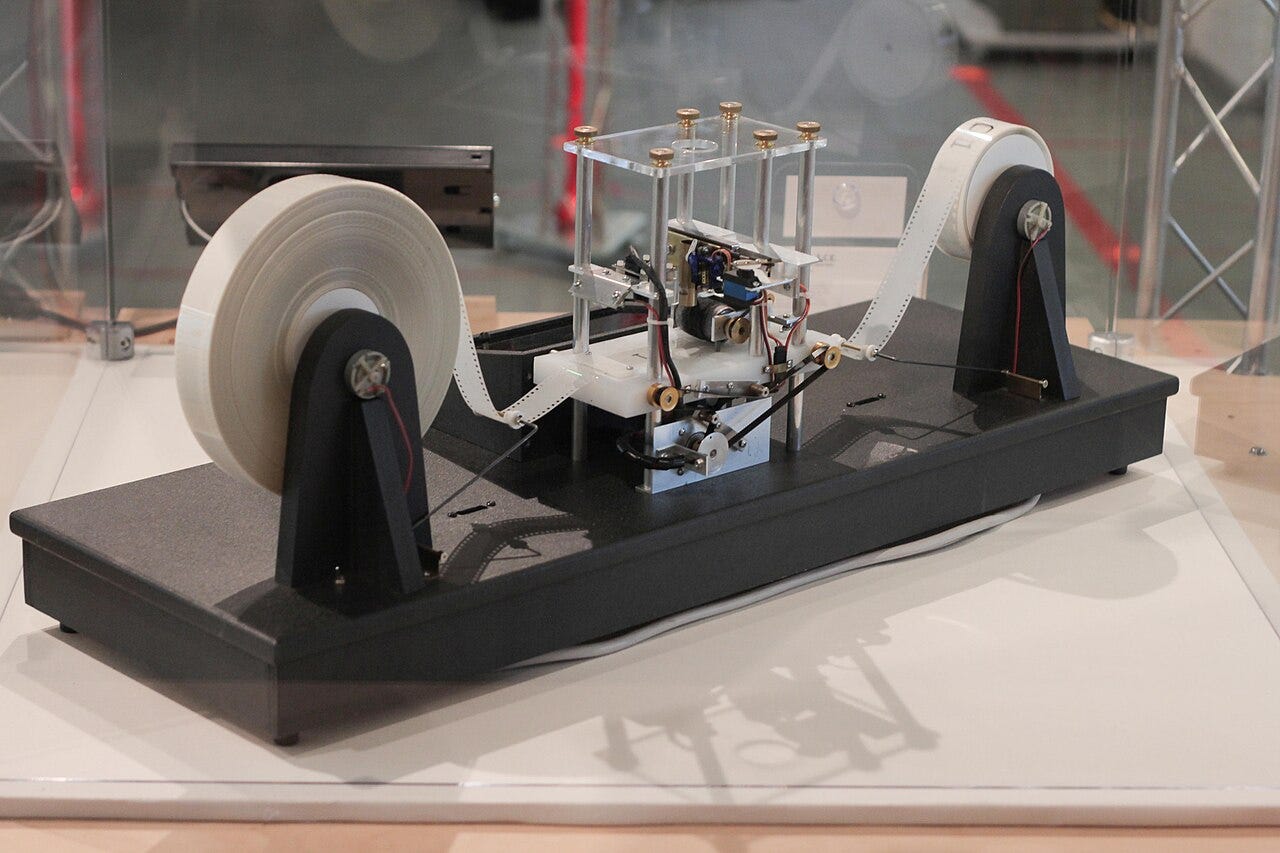
This machine could compute anything that was theoretically computable, laying the foundation for modern computers and AI.
The First Artificial Neurons
In 1943, Warren McCulloch and Walter Pitts made a groundbreaking contribution by proposing a model of artificial neurons. To describe how neurons in the brain might work, they modeled a simple neural network using electrical circuits.
These artificial neurons were like tiny units that could take inputs, apply weights to them, and produce outputs. This idea was crucial because it became the basis for artificial neural networks, which are essential for modern AI.
The Birth of AI: The Dartmouth Workshop
The Dartmouth Summer Research Project, a 2 month-workshop, is widely considered to be the founding event of artificial intelligence as a field.
The real kickoff for AI as a field happened in 1956 at the Dartmouth Workshop. This workshop was organized by big names like Marvin Minsky, John McCarthy, Claude Shannon, and Nathan Rochester from IBM. They gathered to explore the possibility of creating machines that could simulate human intelligence. This event marked the formal beginning of AI as an academic discipline.
At this workshop, John McCarthy introduced the term "Artificial Intelligence" to avoid associations with cybernetics and other fields. It was here that researchers like Ray Solomonoff, Oliver Selfridge, Arthur Samuel, Allen Newell, and Herbert A. Simon presented their early AI programs. This workshop gave AI its name, mission, and key players.
Early Successes (1956-1974)
After the Dartmouth Workshop, the field of AI saw some impressive achievements. Computers were solving algebra problems, proving theorems in geometry, and even learning to speak English. The researchers were incredibly optimistic, predicting that fully intelligent machines would be built within a couple of decades. The government, especially DARPA, poured money into AI research, and major AI labs were established at MIT, Carnegie Mellon University, Stanford, and Edinburgh University.
Predictions and Optimism
In the late 1950s and 1960s, AI researchers made bold predictions:
- In 1958, H. A. Simon and Allen Newell claimed that a computer would become the world chess champion within ten years and discover important new mathematical theorems.
- In 1965, H. A. Simon predicted that machines would be capable of doing any work that humans could do within twenty years.
- In 1967, Marvin Minsky said that the problem of creating AI would be solved within a generation.
- In 1970, Minsky predicted in Life Magazine that in three to eight years, there would be a machine with the general intelligence of an average human being.
One of the first big AI successes came in 1959 when Arthur Samuel coined the term "machine learning" while working on a program that could play checkers better than the humans who programmed it.
The Samuel Checkers-playing Program was among the world's first successful self-learning programs, and as such a very early demonstration of the fundamental concept of artificial intelligence (AI).
The First AI Winter (1974-1980)
However, the 1970s brought a harsh reality check. AI researchers had underestimated the complexity of the problems they were trying to solve. Their optimism had raised public expectations too high, and when those expectations weren't met, funding dried up. This period, known as the first AI winter, was marked by limited computer power and the realization that AI needed vast amounts of information to function, which was not feasible at the time.
Government agencies and funding bodies became frustrated with the lack of progress. The British government's Lighthill report criticized AI research for failing to achieve its ambitious goals, leading to a significant reduction in AI funding.
The AI Boom (1980-1987)
Despite the setbacks, the 1980s saw a resurgence of interest in AI. This period is often referred to as the AI boom. New breakthroughs in research and increased government funding led to significant advancements.
Key Achievements in the 1980s
1980: The first conference of the American Association for Artificial Intelligence (AAAI) was held at Stanford.
1980: XCON, the first expert system, was launched commercially to help configure computer systems based on customer needs.
1981: The Japanese government invested heavily in the Fifth Generation Computer project, aiming to create computers that could understand and reason like humans.
1984: The AAAI warned of an impending AI winter due to possible funding cuts.
1985: AARON, an autonomous drawing program, was demonstrated at the AAAI conference.
1986: Ernst Dickmann and his team demonstrated the first driverless car at Bundeswehr University of Munich.
1987: Alacrity, the first strategy managerial advisory system, was launched commercially by Alactrious Inc.
The Second AI Winter (1987-1993)
As predicted, another AI winter arrived in the late 1980s and early 1990s. The market for specialized AI hardware collapsed as general-purpose desktop computers became more powerful. Many AI companies went bankrupt, and both private investors and government agencies lost interest in funding AI research.
Renewed Progress (1993-2011)
The AI field, now over fifty years old, began to achieve some of its long-standing goals. Increased computer power and a focus on specific problems led to successful applications of AI in various industries, albeit behind the scenes.
Notable Achievements
1997: IBM's Deep Blue defeated world chess champion Gary Kasparov.
1997: Dragon Systems developed speech recognition software for Windows.
2000: Cynthia Breazeal created Kismet, the first robot capable of simulating human emotions.
2002: The first Roomba robotic vacuum cleaner was released.
2003: NASA's rovers, Spirit and Opportunity, landed on Mars and navigated the planet without human intervention.
2006: Companies like Twitter, Facebook, and Netflix started using AI for advertising and user experience algorithms.
2010: Microsoft launched the Xbox 360 Kinect, which used AI to track body movements for gaming.
2011: IBM's Watson won Jeopardy against two former champions.
2011: Apple released Siri, the first popular virtual assistant.
Artificial General Intelligence: 2012-Present
In recent years, AI has become a common part of our daily lives. Virtual assistants, search engines, and other AI tools have become more advanced and widespread. Deep Learning and Big Data have played significant roles in these advancements.
Recent Milestones
2012: Google researchers Jeff Dean and Andrew Ng trained a neural network to recognize cats using unlabeled images.
2016: Hanson Robotics created Sophia, a humanoid robot that can see, replicate emotions, and communicate.
2017: Facebook's AI chatbots developed their own language while negotiating.
2018: Alibaba's language-processing AI outperformed humans on a Stanford reading comprehension test.
2019: Google's AlphaStar achieved Grandmaster status in StarCraft 2, outperforming nearly all human players.
2020: OpenAI started beta testing GPT-3, a language model capable of creating human-like text.
2021: OpenAI developed DALL-E, an AI that can generate images from textual descriptions.
The journey of artificial intelligence has been filled with ups and downs, from early dreams and breakthroughs to periods of skepticism and renewed hope. Today, AI is an integral part of our lives, continuously evolving and pushing the boundaries of what machines can do. The future of AI promises even more exciting developments as we move closer to achieving true artificial general intelligence.
But…
We have witnessed two cycles of AI winters and booms. Is the current period another boom with an impending winter? Only time will tell.
Previous Articles
Economic Bubbles: Money, Madness, and Meltdown
Bread: From Grain to Global Staple
Coffee: From First Wave to Third Wave
Airflight: Early Aviation Marvels
How do Bitcoins work? What gives them value? (Recommended)
Two more quick HWH bites:







